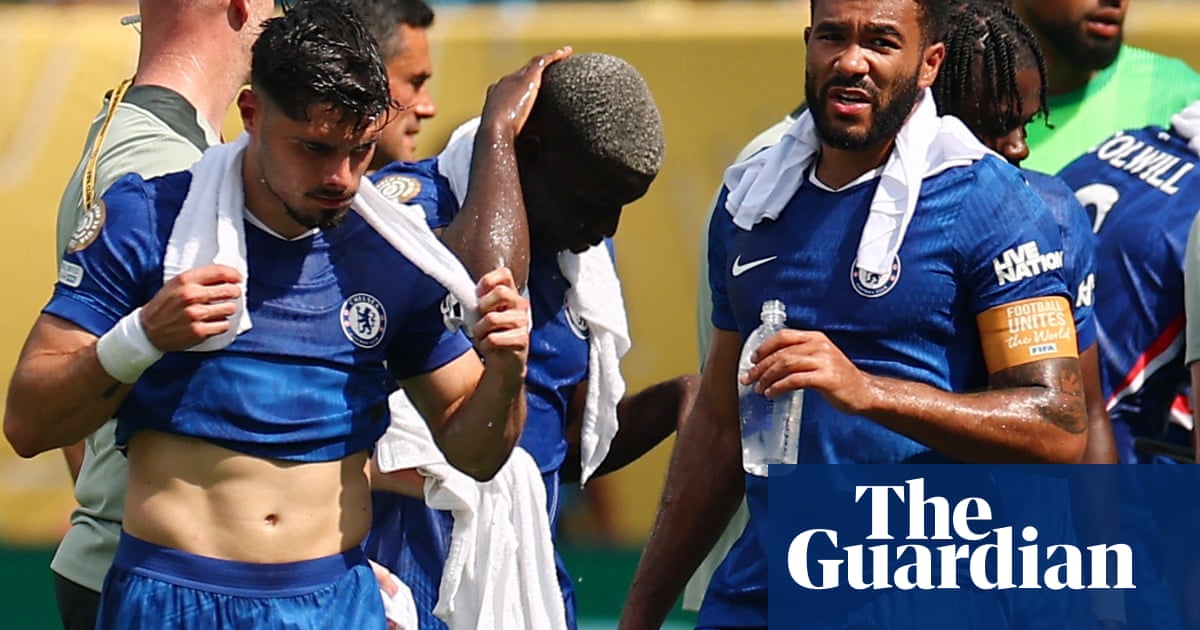Half-time breaks should be extended to 20 minutes in extreme heat, the global players’ union has said. Fifpro is calling for extra measures to protect footballers after what it describes as the “wake-up call” of the Club World Cup, which has beenplagued by extreme temperaturesover the past two weeks.
Fifa protocols allow for a cooling break lasting for three minutes in each half if temperature thresholds are exceeded. According to Fifpro’s medical director, Dr Vincent Gouttebarge, an extended half-time break would provide a necessary additional tool in helping to keep players’ core temperatures within their normal range.
“A cooling break generally lasts three minutes and they are designed to decrease the [player’s] temperature through the use of ice,” he said. “But we are lacking the evidence in terms of what is the optimal duration for a cooling break. A half-time of 15 minutes might not be enough to decrease the core temperature. So a lot of research is being done into alternative mitigation strategies and it could be that a half-time of 20 minutes is significant. It has been shown [to work] in the laboratory. Together with the national [players’] union in Portugal, we are going to test this kind of mitigation strategy in August.”
Complaints from players and coaches at the Club World Cup over temperatures in the US that have breached 40C have been a theme of the tournament. Fifpro’s general secretary, Alex Phillips, said the organisation had been engaging with Fifa over the issue during the past fortnight and that progress had been made.
“We are partially happy because Fifa have been quite responsive once the tournament was under way,” he said. “So they have actually modified how they have been dealing with heat during the matches based on Fifpro’s input.
“Obviously, it would have been better if that had happened in advance, but it’s better that they have adapted and they’ve put in place various different mitigation measures. There’s additional water around the pitch, towels and so on, and the threshold for the cooling breaks has come down. So there has been a positive reaction from Fifa, which is good.
“But going forward, it’s not just Fifa. It’s any competition organiser staging tournaments in this kind of heat. Their protocols [need to] reflect more of the good practice in Australia, US and other countries that deal with this week after week in their national leagues.”
In the US, for example, they do not stage MLS games at midday in Florida and in Australia there are thresholds for the delay or postponement of matches.
Sign up toFootball Daily
Kick off your evenings with the Guardian's take on the world of football
after newsletter promotion
Philips also warned that European football would have to get used to hot weather dictating that international tournaments are played in the winter. “I think the evolution we’ve seen in recent years is basically the football is played 12 months of the year,” he said. “So winter, summer, European winter, we’re going 12 months a year, unfortunately.”
Alexander Bielefeld, Fifpro’s director of policy and strategic relations, said: “I think the scheduling discussion is an important one for the years to come. And it might not just relate to, let’s say, off-season breaks of the players but also to other issues that relate to player welfare or safe attendance by spectators, or the performance on the pitch.”
